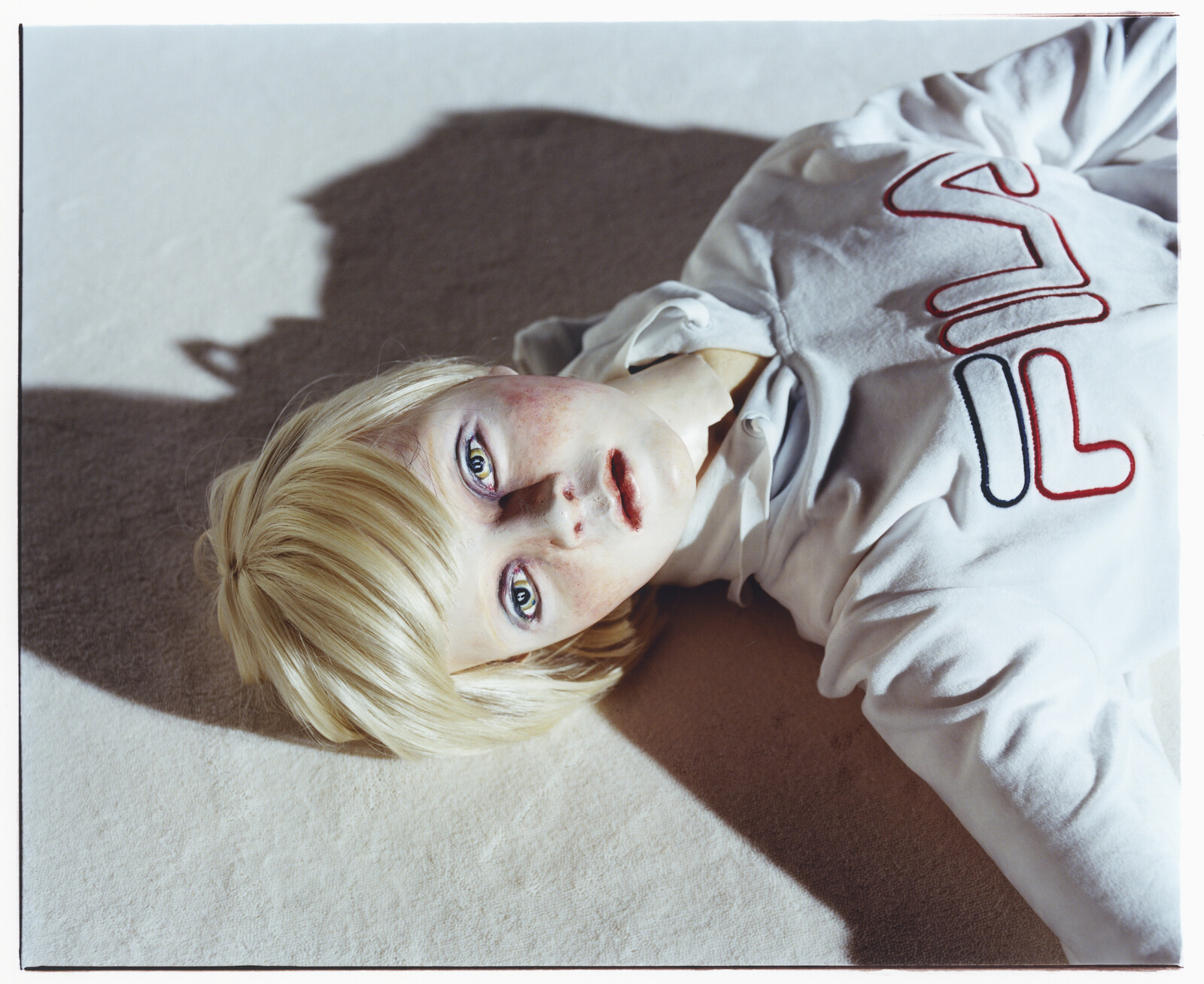This autumn, the Haus am Waldsee, the Georg Kolbe Museum, and Sophiensæle bring Gisèle Vienne’s work to the city as part of Berlin Art Week 2024 and present different approaches to her multifaceted practice, located between photography, sculpture and installation, film, choreography, and theatre. Over the past twenty-five years, the French-Austrian artist, choreographer, and director has created a complex and idiosyncratic body of work that reconsiders our perceptual frameworks and invents artistic languages in order to pave the way for structural societal change. On stage and in the exhibition space, Vienne develops a language of alienation in which she explores the influence of emotions and rhythms on our perception through the use of temporal distortions in movement, sound, light, and other elements. Her use of puppets is a tool to understand our psyche, to explore the repressed, the subconscious, and the unrepresentable. In the tradition of figurative sculpture, her use of dolls unfolds a decidedly political dimension in relation to the body as a place where culturally and socially constructed systems of perception can be questioned, criticised, and possibly dislodged.
The large-scale solo exhibition spanning the entire institution of the Haus am Waldsee assembles the life-size puppets created by Vienne over the last twenty years in a carefully composed installation alongside a body of photographs by the artist, portraying the range and types of dolls. Staged in the guise of a puppet play the presentation is developed purposefully for the architecture of the Haus am Waldsee, where layers of language, sound, and movement are explored within the silences and immobilities of the exhibited dolls. Here, Vienne creates a field of tension between self-determination and heteronomy, questioning moments that ‘cause consciousness to fracture’. The exhibition is curated by Anna Gritz, Director of the Haus am Waldsee.
The exhibition at the Georg Kolbe Museum places Gisèle Vienne’s dolls in conversation with works by female artists of the European avant-gardes who used puppets in their practices or enacted them through poses, costumes, or stage movements. Artists such as Claude Cahun, Valeska Gert, Hannah Höch, Milada Marešová, Sophie Taeuber-Arp, or Marie Vassilieff used puppet theatre as a space for interdisciplinary experiments and as means for political and social criticism. Active in the interwar period, these artists were in search of sources of renewal for their artistic languages. For them, the puppet became a new, fully-fledged form of artistic expression with extraordinarily subversive potential to address themes such as emancipation and gender roles. The show is linking their quest to the pressing issues Gisèle Vienne centres in her work today. Vienne’s film Kerstin Kraus was finalized for the exhibition and is shown for the first time at the Georg Kolbe Museum. The exhibition is curated by Joanna Kordjak on invitation by Kathleen Reinhardt, Director of the Georg Kolbe Museum.
Sophiensæle present Gisèle Vienne’s transdisciplinary practice created for the theatre space as well as the cinema with Jerk (2021), a film based on her cult solo theatre piece of the same name from 2008, as well as one of her key works, the performance Crowd (2017). During Berlin Art Week 2024, Kerstin Stakemeier, professor for art theory and mediation, will moderate an artist talk between Vienne and the choreographer and performance artist Florentina Holzinger. Jerk, based on a short story by Dennis Cooper is a minimalist film which takes the profound experience of mechanisms of violence to the extreme. The performance Crowd shows 15 dancers full of concentrated energy move in virtuosic slow motion to classics of rave culture like Underground Resistance, KTL or Jeff Mills. Crowd tells the stories of counter-cultures, of emotions, longings and tensions in the microcosm of a raving group: an emotional state of emergency.
Gisèle Vienne (b. 1976) is a Franco-Austrian artist, choreographer, and theatre and film director. Since her childhood, she was trained in visual arts by Dorothéa Vienne-Pollak. She studied dance and music, philosophy, and puppeteering. Over the past twenty years, her work, among them the productions Showroomdummies (2001/2009/2013/2020), I Apologize (2004), Kindertotenlieder (2007), Jerk (2008), This Is How You Will Disappear (2010), LAST SPRING: A Prequel(2011), The Ventriloquists Convention (2015) in collaboration with Puppentheater Halle, Crowd (2017), L’Etang(2021), and EXTRA LIFE (2023, invited to Theatertreffen Berlin 2024), has been touring in Europe, Asia, and America. Her work has also been exhibited in the Museo Nacional de Bellas Artes, Buenos Aires ; the Whitney Museum of American Art, New York ; Centre Pompidou, Paris and Musée d’Art Moderne de Paris.
In the framework of the presentations in Berlin, a new publication dedicated to the collaborative work of Gisèle Vienne and Estelle Hanania, including texts by Anna Gritz and Elsa Dorlin, will be published by Haus am Waldsee and Spector Books this autumn. 180 pages, English/German/French, 152 colour images, hardcover.
Events
Opening, This Causes Consciousness to Fracture—A Puppet Play
September 11, 7pm, Haus am Waldsee
(September 12, 2024–January 12, 2025)
Opening, I Know That I Can Double Myself: Gisèle Vienne and the Puppets of the Avant-Garde
September 12, 6pm, Georg Kolbe Museum
(September 13, 2024–March 9, 2025)
Screening of Gisèle Vienne’s Jerk
September 15, 2–3pm, Sophiensæle, Sophienstraße, 10178 Berlin
Artist talk
September 15, 3:30–4:30pm, Sophiensæle, Sophienstraße 18, 10178 Berlin
Gisèle Vienne in conversation with Florentina Holzinger, moderated by Kerstin Stakemeier
Gisèle Vienne: Crowd performances
November 14–16, 8pm, Sophiensæle, Sophienstraße 18, 10178 Berlin
Press contacts
Haus am Waldsee
Erik Günther, presse [at] hausamwaldsee.de / T +49 30 801 89 35
Georg Kolbe Museum
Luna Schaffron, presse [at] georg-kolbe-museum.de / T + 49 30 304 21 44
Sophiensæle
Sebastian Sury, presse [at] sophiensaele.com / T +49 30 27 89 00 33


